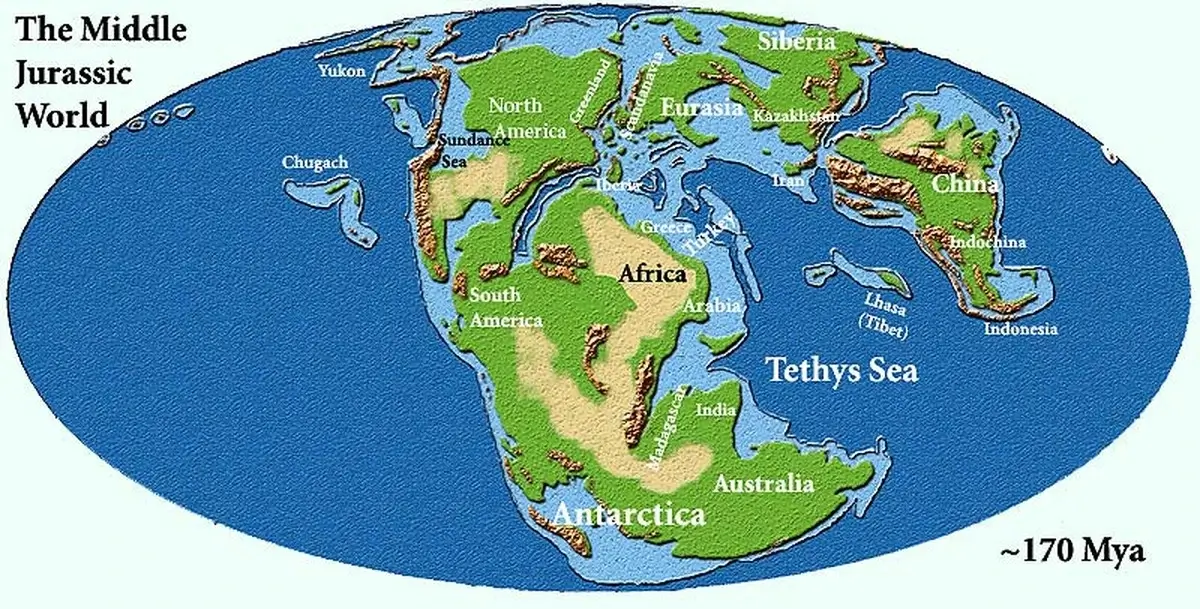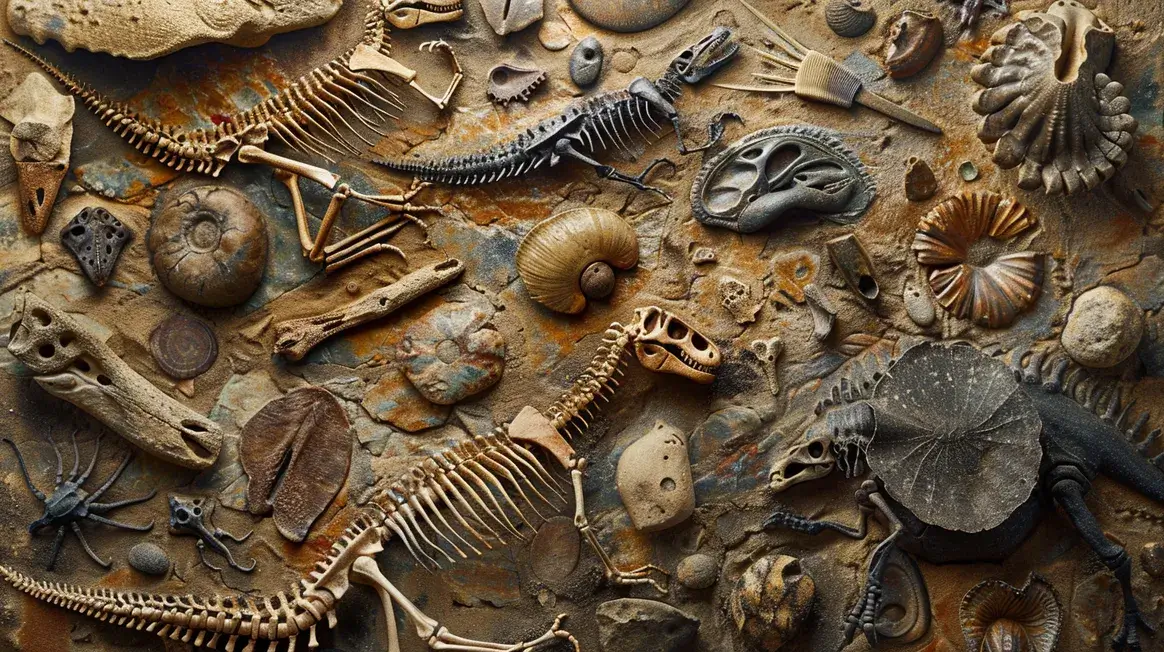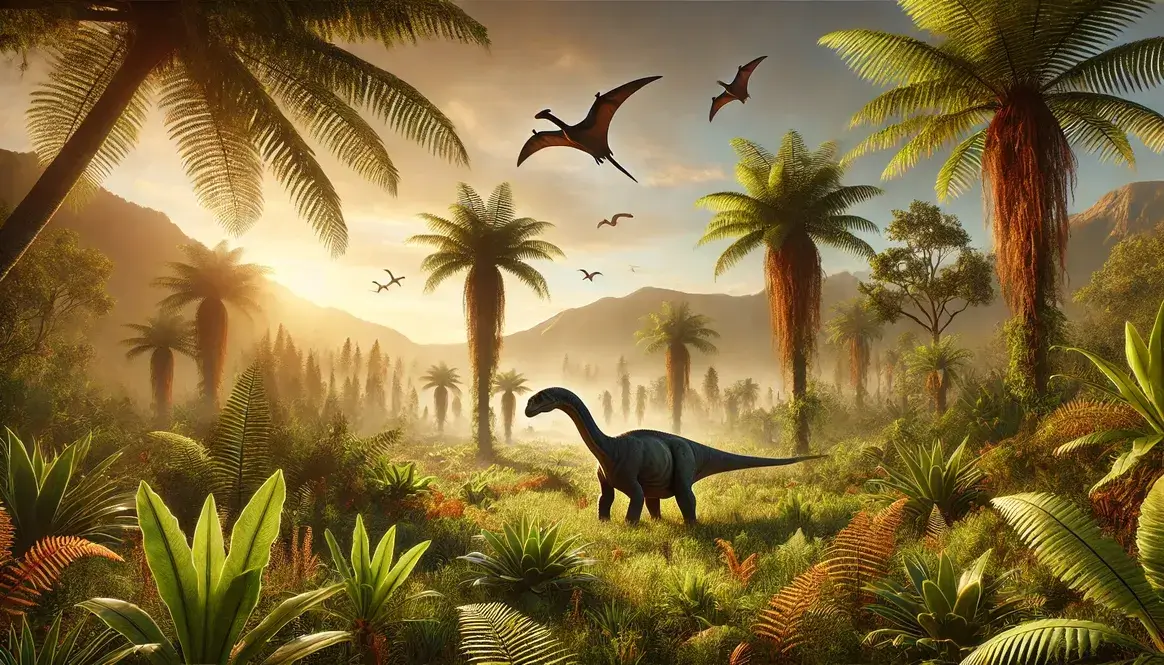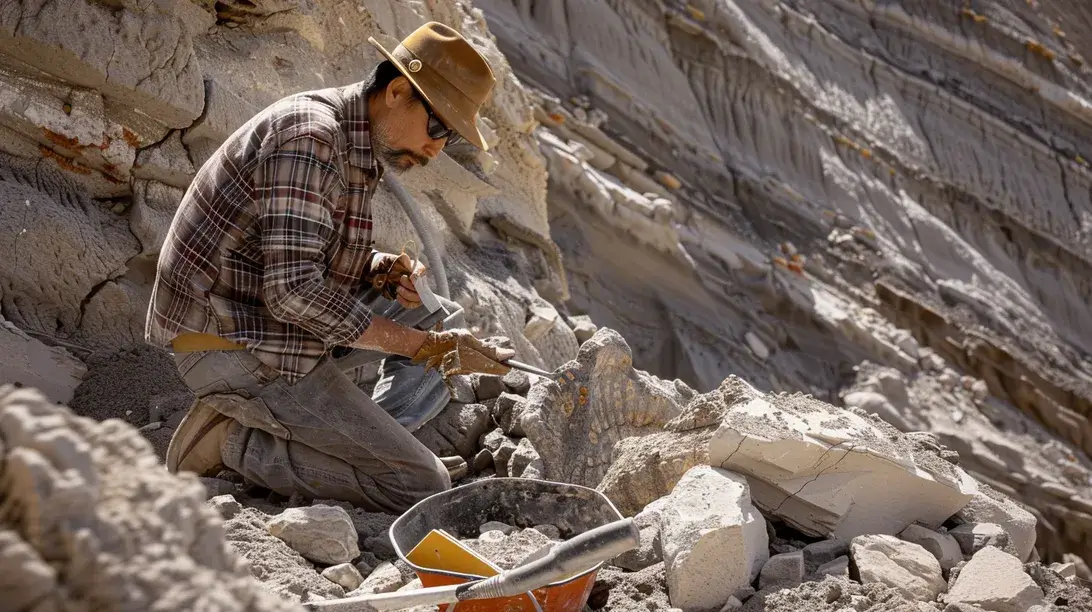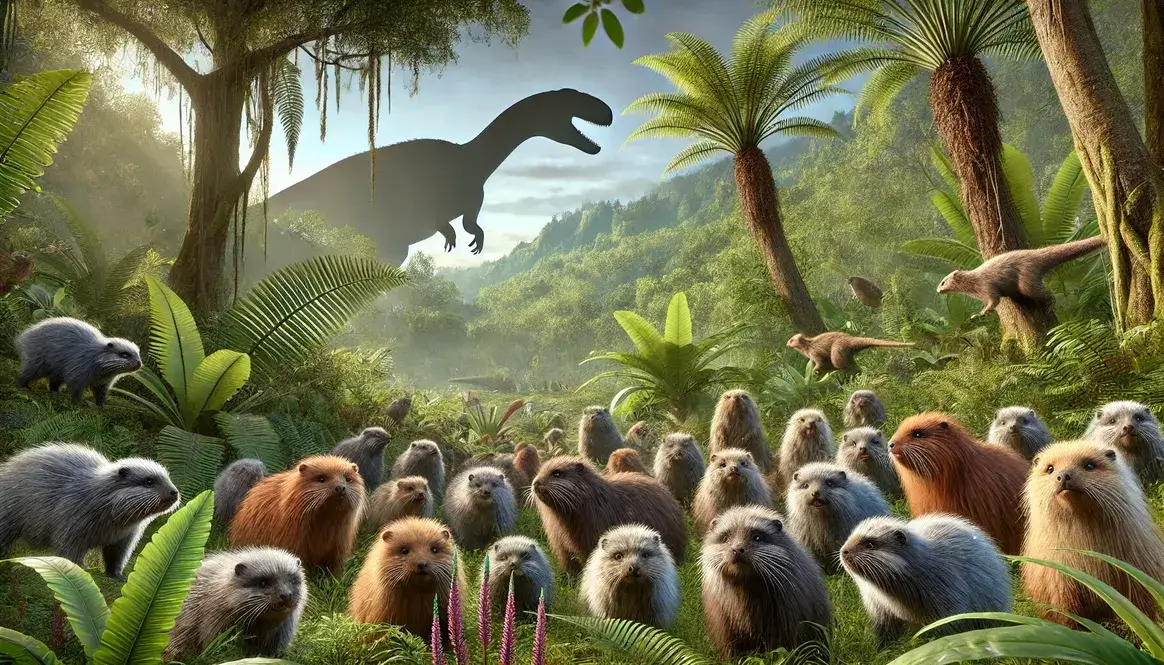At the dawn of the Jurassic Period, about 201 million years ago, our planet looked vastly different from today. All the continents we now know were merged into one enormous landmass called Pangaea. This supercontinent was about to embark on a remarkable journey of transformation.
During the Jurassic, which spanned from 201 to 145 million years ago, Jurassic Pangaea began its slow but dramatic breakup. It was as if Earth had decided to rearrange its giant continental puzzle pieces, setting in motion a process that would eventually lead to the world map we recognize today.
The Breakup of Jurassic Pangaea Begins
The fragmentation of Jurassic Pangaea was a gradual process that reshaped the face of our planet. This monumental change began with the formation of cracks in the Earth’s crust, initiating a series of events that would alter the course of geological history.
Early Stages of Pangaea’s Fragmentation
The breakup of Pangaea wasn’t a sudden event. It started with the formation of cracks in the Earth’s crust, similar to how dry mud begins to split. These cracks, known as rifts, appeared along what would eventually become the edges of new continents.
As these rifts grew, they created weak spots in Pangaea. The Earth’s crust stretched and thinned along these rifts, much like pulling apart a piece of taffy. This process, called rifting, was the first step in creating new oceans.
Major Tectonic Events of the Jurassic
During the Jurassic, several significant geological events contributed to Pangaea’s breakup:
- The Central Atlantic Magmatic Province (CAMP): This period of intense volcanic activity occurred right at the beginning of the Jurassic. Vast amounts of lava erupted, covering large areas of the supercontinent.
- The opening of the Gulf of Mexico: As North America began to drift away from the rest of Pangaea, it created a gap that would eventually become the Gulf of Mexico.
- The separation of Gondwana: The southern part of Pangaea, called Gondwana, began to split into smaller continents. This process would continue long after the Jurassic ended.
| Tectonic Event | Time Period | Impact |
|---|---|---|
| CAMP | Early Jurassic | Massive volcanic eruptions, climate change |
| Gulf of Mexico opening | Middle Jurassic | Created new marine environments |
| Gondwana separation | Throughout Jurassic | Formed new continents in the Southern Hemisphere |
Birth of New Oceans: The Atlantic and Tethys
The breakup of Pangaea led to the formation of new oceans, dramatically altering the geography of the Jurassic world. These emerging bodies of water would play crucial roles in shaping climate patterns and influencing the evolution of marine life.
Formation of the Proto-Atlantic Ocean
As Pangaea continued to split, a new ocean began to form between what would become North America and Africa. This was the birth of the Atlantic Ocean, though at that time it was much narrower than it is today.
The space between the separating landmasses started as a small seaway, but over millions of years, it grew wider and wider. This growing ocean had a significant impact on the climate and life on the surrounding land.
The Tethys Sea: A Vanished Ocean
While the Atlantic was just being born, another ancient ocean called the Tethys Sea was changing shape. The Tethys was located between the northern and southern parts of Pangaea. As Pangaea broke apart, the Tethys grew larger and became an important feature of Jurassic geography.
The Tethys Sea was home to many marine creatures, including ancient sea monsters like plesiosaurs and ichthyosaurs. Today, this ocean is gone, but we can find clues about it in rock layers and fossils.
Jurassic Pangaea’s Changing Face
The breakup of Pangaea resulted in a constantly evolving landscape during the Jurassic period. New landmasses emerged, coastlines shifted, and seaways appeared, creating a dynamic and diverse world for the plants and animals of the time.
Emerging Landmasses and Seaways
As Pangaea broke apart, new landmasses and seas began to form. The supercontinent was essentially playing a game of continental musical chairs, with pieces of land moving to new positions. Some of the major changes included:
- The formation of Laurasia in the north (which would later become North America, Europe, and Asia)
- The beginnings of Gondwana’s breakup in the south (which would eventually form South America, Africa, Australia, and Antarctica)
- The creation of new seaways between these landmasses
Shifting Coastlines and Island Chains
With all this movement, the coastlines of the Jurassic world were constantly changing. New bays and gulfs formed, while other areas that were once underwater became dry land. Island chains also appeared as pieces of land were left behind by the moving continents.
These changing coastlines and new islands had a big impact on life during the Jurassic. They created new habitats and allowed plants and animals to spread to new areas. For example, some dinosaurs might have used island chains as stepping stones to move between continents!
| Landmass | Modern Equivalent | Key Features |
|---|---|---|
| Laurasia | North America, Europe, Asia | Formed in the Northern Hemisphere |
| Gondwana | South America, Africa, Australia, Antarctica | Began breaking up in the Southern Hemisphere |
| Island Chains | Various | Created pathways for species migration |
The breakup of Jurassic Pangaea set the stage for the incredible diversity of life we see on Earth today. By creating new oceans, continents, and ecosystems, it gave plants and animals the chance to evolve in new and exciting ways. The world of the Jurassic was one of constant change, shaping the planet we know and love today!
Climate in a World of Change
As Pangaea fragmented during the Jurassic period, Earth’s climate underwent significant transformations. The shifting landmasses and emerging oceans reshaped weather patterns, creating a diverse array of climatic conditions across the globe.
Global Climate Patterns During Pangaea’s Breakup
The breakup of Pangaea triggered several key changes in global climate:
- Ocean Current Shifts: New seaways altered ocean circulation, redistributing heat around the planet.
- Greenhouse Effect: Elevated CO2 levels contributed to a warmer Jurassic world.
- Monsoon Development: Emerging coastlines fostered the formation of monsoon systems.
These factors combined to create a generally warm, humid climate throughout much of the Jurassic period.
Regional Climate Variations
The Jurassic world was far from uniform. Different regions experienced distinct climatic conditions:
- Coastal Areas: Mild and humid, perfect for lush vegetation
- Continental Interiors: Extreme temperatures with hot summers and cool winters
- Polar Regions: Relatively warm with no permanent ice caps, but still experiencing seasonal darkness
This climatic diversity laid the groundwork for the evolution of specialized plant and animal species adapted to specific environmental niches.
Life Adapts: Ecosystems in Flux
The changing geography and climate of Jurassic Pangaea catalyzed significant shifts in both terrestrial and marine ecosystems. Life found innovative ways to thrive in these new conditions.
Evolving Terrestrial Environments
As Pangaea fractured, land-based ecosystems underwent remarkable transformations:
Forests: The warm, humid Jurassic climate fostered extensive forested areas. Conifers, ginkgoes, and ferns dominated these landscapes, providing food and shelter for a diverse array of creatures. The Jurassic plants were markedly different from modern flora, creating alien-looking environments.
Deserts: In continental interiors, far from coastal influences, arid zones developed. These harsh environments drove the evolution of drought-resistant plants and animals adapted to extreme conditions.
Wetlands: New coastlines and low-lying areas saw the formation of extensive wetlands. These became crucial habitats for many species, including some of our early mammalian ancestors.
New Marine Habitats and Their Inhabitants
The birth of new oceans and seas opened up exciting opportunities for marine life:
| Habitat Type | Characteristics | Notable Inhabitants |
|---|---|---|
| Coral Reefs | Warm, shallow waters | Diverse fish, invertebrates |
| Deep Oceans | Vast, open waters | Large marine reptiles, early sharks |
| Coastal Waters | Nutrient-rich shallows | Variety of fish, marine reptiles |
These diverse marine environments drove the evolution of new species, including some of the most fearsome Jurassic sea monsters that have captured our imagination for generations.
Dinosaurs in a Changing World
The fragmentation of Pangaea profoundly influenced dinosaur evolution and distribution. These remarkable creatures faced new challenges and opportunities as their world transformed around them.
Dinosaur Distribution and Migration
As continents drifted apart, dinosaur populations were affected in several ways:
- Isolation: Some groups became separated, leading to unique evolutionary paths.
- New Routes: Land bridges and island chains created migration opportunities.
- Habitat Shifts: Changing climates forced populations to relocate or adapt.
These factors contributed to the diverse array of dinosaur species that populated the Jurassic world.
Evolutionary Pressures and New Opportunities
The changing Jurassic landscape presented both challenges and opportunities for dinosaurs:
This quote aptly describes the situation faced by Jurassic dinosaurs. They had to evolve rapidly to cope with new climates and ecosystems. This period saw the rise of giant Jurassic sauropods and fearsome Jurassic predators, each adapted to their specific environmental niches.
The isolation of dinosaur groups on different continents also led to unique evolutionary paths. When these groups later reconnected, it sparked new forms of competition and further diversification.
Jurassic Pangaea’s Legacy: Shaping the Modern World
The breakup of Pangaea during the Jurassic period laid the groundwork for the world we know today:
- Continental Configurations: The movement of continents that began in the Jurassic continued, eventually resulting in our familiar world map.
- Biodiversity Patterns: The isolation of populations led to the evolution of unique species in different regions, explaining much of Earth’s current biodiversity.
- Resource Distribution: Many of today’s fossil fuel deposits formed from Jurassic life, buried and transformed over millions of years.
- Climate Systems: Global climate patterns established during Pangaea’s breakup, such as ocean currents and monsoon systems, continue to influence our weather.
Understanding Jurassic Pangaea provides valuable insights into Earth’s dynamic nature. As we face modern climate change, the adaptations of Jurassic life to their shifting world offer important lessons for our future.
The story of Jurassic Pangaea reminds us that change is a constant in Earth’s history. The world map we know isn’t fixed – it’s just one frame in our planet’s long and fascinating geological journey.

